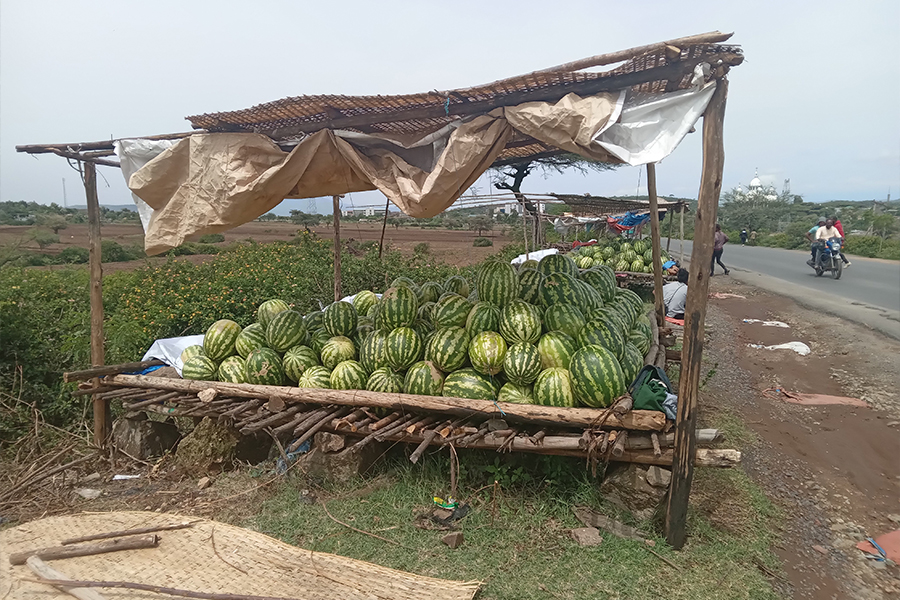
A row of watermelon vendors on the road from Adama (Nazreth) town to Addis Abeba sell a piece from 200 Br to 800 Br depending on the size. Aptly named, watermelon is 92pc water and was first used by ancients as a source of hydration. Farmers consider them ready for harvest when their "belly patch" (a portion of the rind that rests on the ground) turns from white to creamy yellow.
[ssba-buttons]